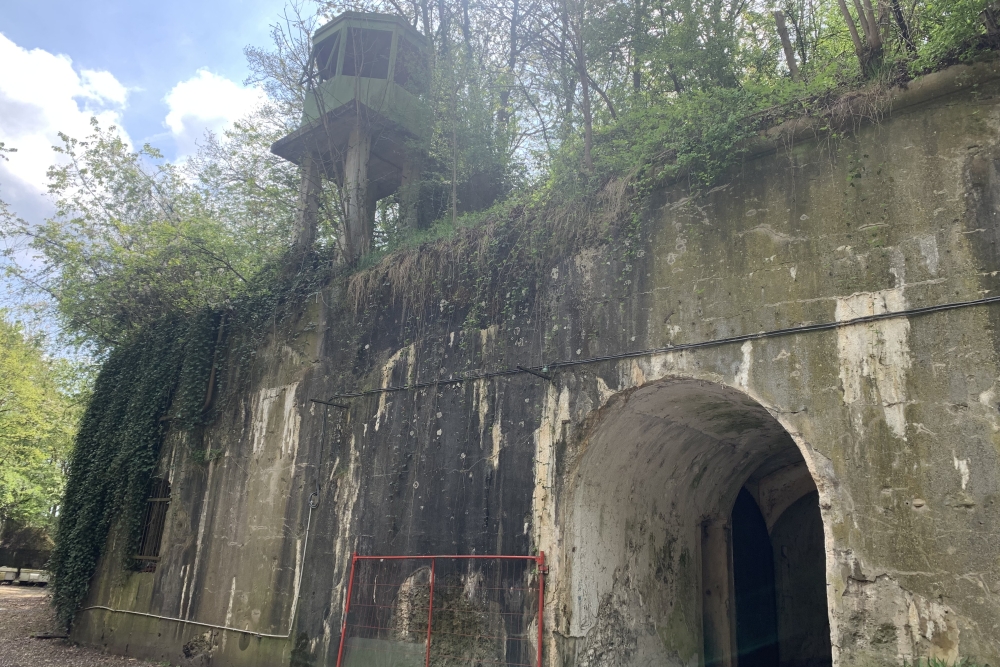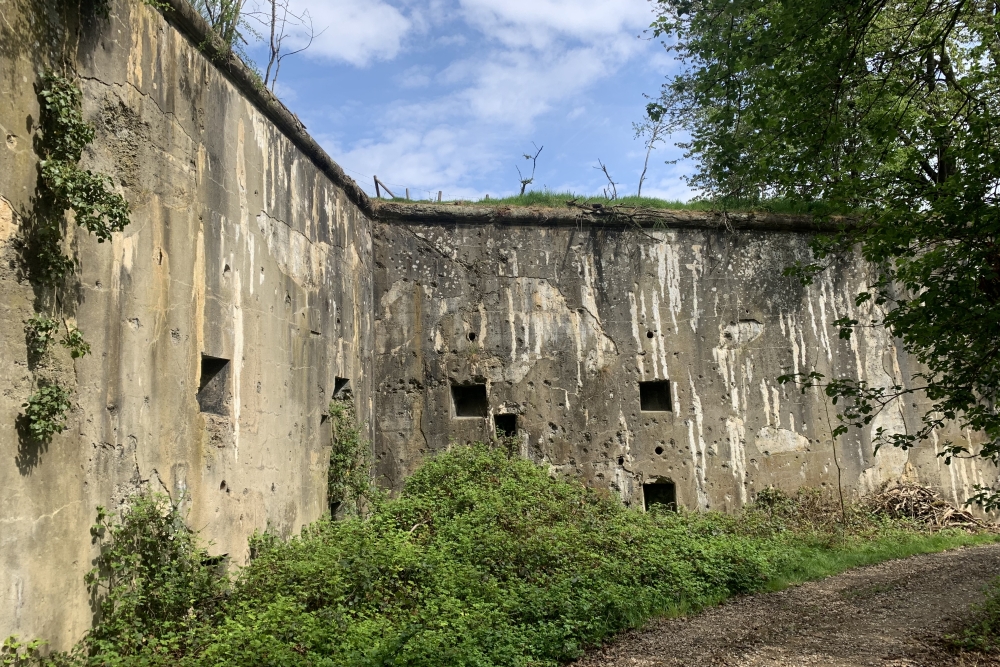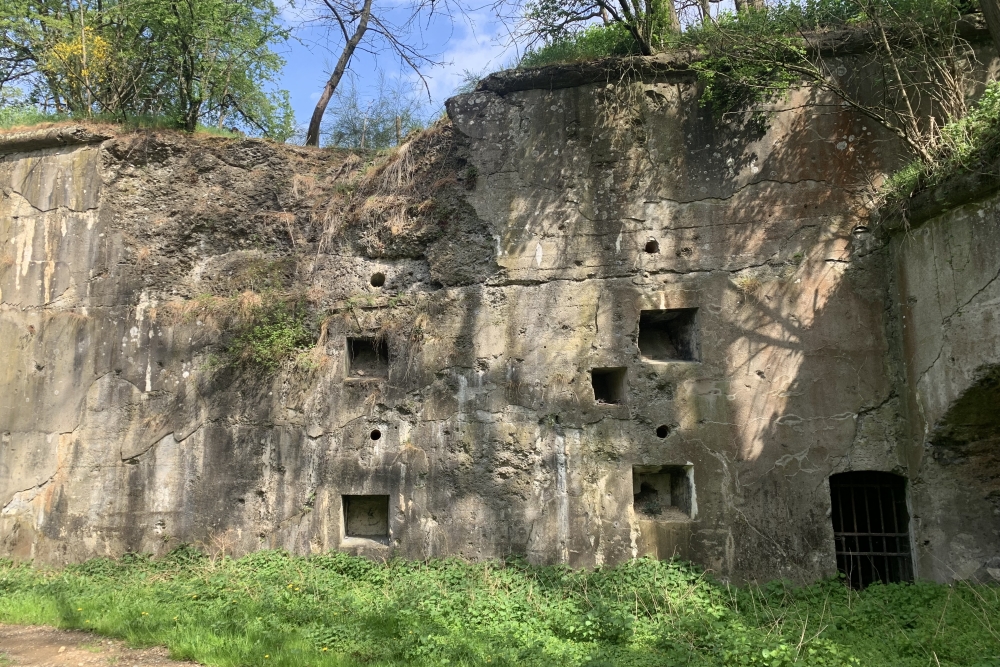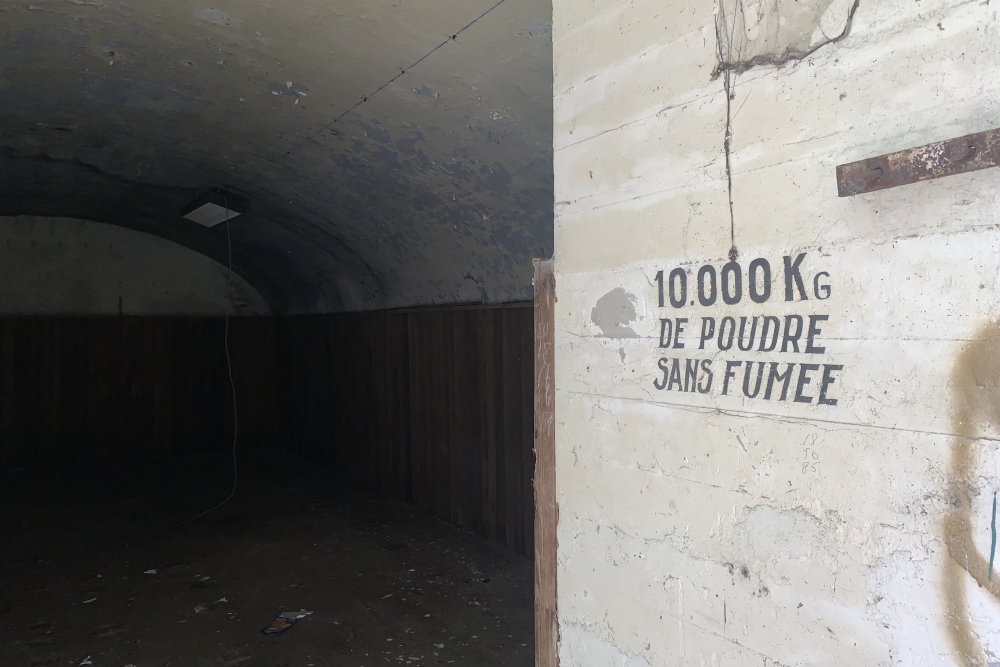Fortfied Position Liège - Fort Pontisse
Fort Pontisse was built in 1888.
When it opened, it had two turrets with a 210 mm gun, one turret with two 150 mm guns, two turrets with two 120 mm guns each and four turrets with a 57 mm gun for the fort's proximity defense.
When World War I broke out in August 1914, these guns were actually obsolete at 26 years old. So were the turrets. These were not able to cope with the heavier shells that had been developed in the meantime.
Except for the 57 mm guns, the guns were supplied by the Krupp company from Germany. The 57 mm guns were from Nordenfeld of Great Britain.
Fort Pontisse was the first fort to be shelled in August 1914 with the infamous “Dicke Bertha” howitzer from the Krupp company. This howitzer could fire shells of 420 mm. No fort of ‘La Position Fortifiée de Liège’ could withstand this caliber. Fort Loncin, for example, was completely blown up by a direct hit in the ammunition depot under the fort's central massif. The ‘Dicke Bertha’ was positioned the village of Mortier on the northeast side of Liège.
When the Belgian forts around Liege were rearmed in the 1930s in relation to geopolitical developments in Germany, the fort was given a turret with two 105 mm guns and the four guns for proximity defense were replaced by 75 mm guns.
During the occupation of the fort from 1914 to 1918, the Germans made repairs to the fort. The fort was even fortified.
At the entrance gate, on the left side are located, among other things, the room of the watch commander in time of peace, the mortuary, and several warehouses. On the right side are the room of the watch commander in time of war, the kitchen, washrooms for the men, warehouses, showers for the men, latrines, and a prison, the cachot (for punished soldiers).
Photo 3 shows contrescarpe 2 of the fort. It consists of two floors. On the first floor are two machine guns, an emergency exit and the latrines. On the 1st floor are also two machine guns and the searchlights.
Photo 4 shows contrescarpe 3 of the fort. Also here on the first floor are 2 machine guns for proximity defense of the fort and the latrines. The 1st floor also contains two machine guns and two searchlights.
photo 5 shows one of the rooms that after the 2nd World War when the fort had definitively lost its function for the defense of Belgium, was set up as an ammunition depot. When the fort also lost this function in the 1950s, the fort was abandoned and has not been used by the Belgian army since the 1990s.
The fort is no longer maintained and is increasingly falling into disrepair. The fort is open only on rare occasions.
Do you have more information about this location? Inform us!
Source
- Text: Ed Lewandowski
- Photos: Ed Lewandowski
- La Position Fortifiée de Liège, Coenen & Vernier
Nearby
Museum
Point of interest
- Memorial Capain Pire Fort Pontisse - Oupeye
- Bunker MeMo 1 and 1 bis - Ile Monsin, Liège
- Memorial Cemetry Houtain-Saint-Siméon - Houtain-Saint-Siméon
Monument
- Memorial Fort Pontisse - Herstal
- War Memorial Vivegnis - Vivegnis (Oupeye)
- War Memorial A.S. Herstalienne Cemetery Rhees Herstal - Herstal
Cemetery
- Municipal Cemetery Rhees Herstal - Herstal
- German Memorial and Mass Grave Cemetery Rhees Herstal - Herstal
- Belgian War Graves Herstal Cemetery Rhées - Herstal
Remembrance Stone
- Stumbling Stones Rue Devant les Ecoliers 3 - Liège
- Stumbling Stone Rue Matrognard 7 - Liège
- Stumbling Stone Rue Vinave d’Ile 16 - Liège








